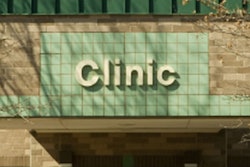
For decades, healthcare has remained outside of the consumer business model. But as costs shift to patients, consumers are making healthcare decisions the same as they make other purchases in their lives: with price looming large. Save On Medical hopes to facilitate this process by offering price comparisons for imaging services.
The company offers patients the opportunity to shop for prices and purchase medical services online, telling consumers the average cost for comparable services in their area and helping them "outsmart insurance companies and high-cost radiology providers."
 Matt Schneider, co-founder and vice president of marketing, Save On Medical.
Matt Schneider, co-founder and vice president of marketing, Save On Medical."We hear your cries for cheap MRI, low-cost mammograms, and cheap CT scans," Save On Medical's website proclaims. "There are up to 89% discounts available to patients for medical procedures and services ... hospitals, clinics, and doctors will offer discounts for services, especially if a patient uses self-pay or cash pay, takes an off-peak appointment, or even simply asks for the discount."
The company was founded in late 2011 by Chris Christenberry, president, and Matt Schneider, vice president of marketing. Christenberry and Schneider decided to focus on radiology first because it is the most cost-compared medical procedure, according to Schneider. The firm's initial client target was uninsured patients -- although with healthcare reform, even insured patients are paying for more and more procedures out of pocket.
"Radiology is the most price-shopped medical specialty, due to the high cost of procedures such as MRIs, CTs, and ultrasounds," Schneider told AuntMinnie.com. "Patients view imaging as a commodity, and it's important for them to have a resource that gives them clear data on costs and quality metrics."
How it works
Potential patients enter their city, state, or ZIP code into Save On Medical's search bar, and select the kind of procedure needed from drop-down lists. Save On Medical produces a list of the top 10 providers for the service in the client's location, including price information. For more data on each practice's offerings, Save On Medical users can check the site's "Docometer grading score" -- a tool that helps clients make decisions based on more than just price.
"We do our own research to calculate the Docometer score, including factors like the number of onsite radiologists in a practice, any awards, whether the site is [American College of Radiology] accredited, what kind of technology it has, and patient reviews," Schneider said.
Patients then choose a provider and request an appointment; the provider contacts the client within 24 hours to confirm. Finally, users are emailed a request for payment, which they make via PayPal -- before they have their exam.
"It's a risky patient population, self-payors," Schneider said. "In healthcare, only 20% of self-pay fees get collected. We put the payment component before time of service, so our radiologist clients don't have to go through the collection process."
Save On Medical is currently focusing on penetrating the Florida and New York markets, according to Schneider; it now boasts 250 individual imaging center clients in these states, with 179 in Florida alone.
"For us, 2012 was about proof of concept," he said. "It was our first full year to test a lot of assumptions we had, and we had 15,000 unique visitors to the site. We're finding that we have a 7% conversion rate -- that is, when visitors view a provider's profile, 7% of them book an appointment -- higher than Yelp's average, which is about 3%."
How do radiologists benefit?
Save On Medical's business model might seem to feed fears in radiology about commoditization, in which the quality of imaging services is trumped by price. But the firm believes that its model can benefit radiologists.
How? By improving patient volume and, thus, practice revenue, as well as producing savings in advertising and billing costs, according to Schneider. The company earns its money through provider subscriptions: Practices make payments each month to be listed on Save On Medical. Booking even one patient each month through the site will cover the provider's subscription fee, he said, and the subscription also includes press release announcements for partnerships and milestones, regional Google AdWords campaigns, and listings optimized for search engines.
"The medical industry knows that patients are paying more out of their pockets toward healthcare, so physicians know that this price-sensitive market is a good place for them to focus their energy," Schneider said. "We give the providers a venue to share their prices while also promoting their services."
The company also encourages its radiology practice clients to use pricing as a marketing component in real-time.
"If Tuesday's and Friday's MRI slots aren't fully booked, our clients can cut the pricing for those days and offer a value rate," he said. "It's a way to work with excess capacity."
The reality is that there's an increasing trend toward consumerism in the healthcare marketplace, as both doctors and patients are rewarded for finding cost savings, Schneider said.
"We've been hit really hard [with cuts] in the radiology industry, and we have to figure out creative ways to adapt," he said. "If we don't, the government will do it for us. Save On Medical really is about adjusting to a new marketplace reality."




















